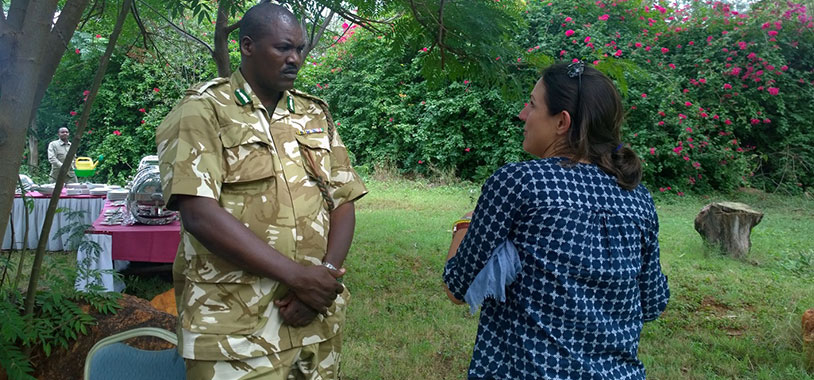There was a sense of history in the air as Dr Richard Leakey took his seat at the head of the conference tables between two imposing men in uniform. Ever since Dr Leakey had been given the task of resuscitating the Kenya Wildlife Service as the chair of its new board, we’ve been waiting to see who he would have stand beside him. Now, on Wednesday 11th February at Tsavo’s Kilaguni Lodge, we were to meet him for the first time.
“There are more challenges for Kenya’s wildlife than ever before,” Dr Leakey began, before listing new roads, rail links, pipelines, and above all a booming human population. And when people and wildlife clash, it is the Kenya Wildlife Service (KWS) that becomes a political target.
On his left was William Singiei, the new KWS Deputy Director for Security, hired from the upper echelons of Kenya’s famed General Service Unit, the paramilitary wing of the police. On his right was a man less accustomed to camouflage, but who would now be leading KWS and the hopes of a nation. Mr Kitili Mbathi was until recently the CEO of CFC Stanbic Bank. Back in the 1990s, Mr Mbathi had been part of a “Dream Team” led by Dr. Leakey to reform public service, winning back confidence of the donor community and citizens through measures such as downsizing a bloated civil service and restoring integrity in key public institutions.
As the new Director General (‘DG’) had been in the job all of 8 days, the dozen or more conservation organisations active in the Tsavo region were given an opportunity to talk briefly on their work in the area first.
Then the DG stood up. Many were struck by his humility – and his American accent, a result, presumably, of his University of Michigan education. He acknowledged that he’s a novice in conservation, but on a fast track to learning. While this might take a little time, he said, it meant that he was free of pre-conceived ideas. His initial job, he concluded, would be to listen and evaluate objectively.
The enormity of the task of transforming KWS was made clear by both the new DG and by Dr Leakey. Revenues have declined by over 60% over the last 5 years. Grants from government are also down. The organisation has a bigger job – thanks to the increasing clashes between humans and wildlife, but fewer resources with which to deal with them.
A 5-10 year strategic plan has been developed but will require approximately $300m to implement. Overall the aim is to increase wildlife numbers, maintain diversity and reduce conflict. Dr Leakey listed some of the things needed for KWS to function well: substantial investment in human capital through ranger training; proper staff housing and a sense of belonging to the organisation. Corruption – a blight among many Kenyan governmental institutions, KWS included – can and would be dealt with by using tried and tested systems, he said, with the objective of zero corruption.
While the day was necessarily thin on details of the changes to come, it was overflowing with optimism for the future. All of the NGOs in the room, Save the Elephants included, warmly welcomed the new DG, the new Deputy Director of Security and the new era for the Kenya Wildlife Service and for Kenya.



